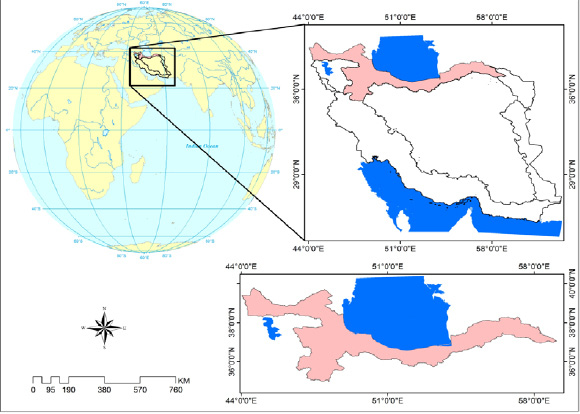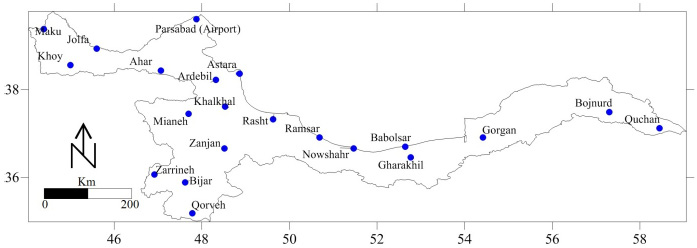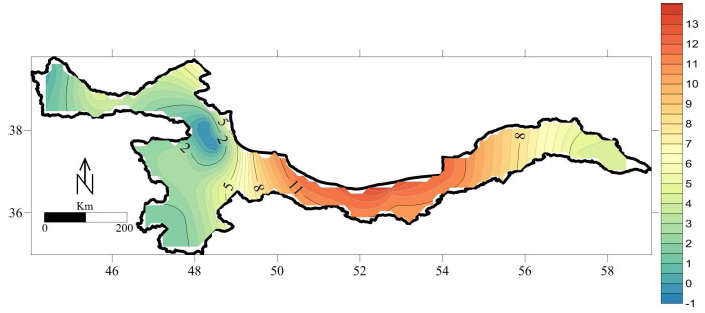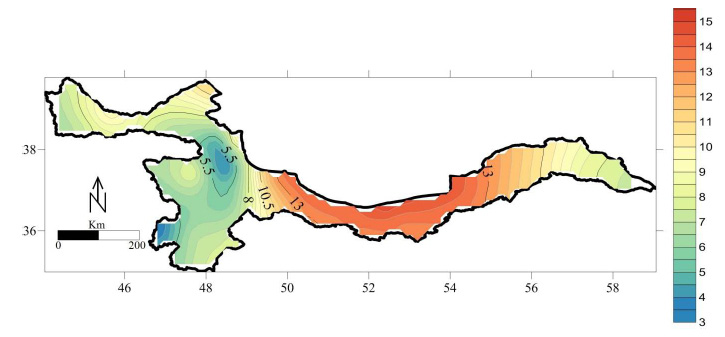¹Department of Biology, Faculty of Science, University of Hail, Saudi Arabia P.O. Box 2440, Hail 81451, Saudi Arabia
²Department of Pathology, Faculty of Veterinary Sciences, University of Khartoum, Khartoum Sudan
Corresponding author Email: nourmageed@yahoo.com
Article Publishing History
Received: 10/02/2018
Accepted After Revision: 21/03/2018
The present study was carried out to investigate the molluscicidal activity of the herb Pulicaria crispa against the freshwater snails Biomphalaria pfeifferi, the intermediate host of Schistosoma mansoni parasites that cause intestinal schistosomiasis. It is an attempt to search for potential molluscicidal plants indigenous to Republic of Sudan. The molluscicidal activity of different parts of Pulicaria crispa (leaves, stems, and roots) on Biomphalaria pfeifferi snails in different periods of exposure (24, 48, and 96 hours) was studied. The assessment of toxicity was based on calculations of the lethal concentrations that killed 50% and 90% (LC50 and LC90) of the snail populations. Results revealed that leaves were the most potent against the snails (having the least LC50 and LC90 values) for all exposure periods (24, 48, and 96 hours), followed by flowers, and finally the stems. With regard to the effect of exposure time, it was evident that the prolongation of exposure period resulted in more potency of plant leaves against the snails as shown by the decreased LC50 and LC90 values for 96 hours exposure period, followed by 48 hours, and finally 24 hours. During the first five hours of exposure, snails showed sluggish activity, meanwhile dead snail remained inside their shells with blood around the shells. Accordingly, the herb Pulicaria crispa could be considered as one of the promising plant molluscicides in schistosomiasis control programs.
Pulicaria Crispa; Biomphalaria Pfeifferi; Plant Molluscicide; Schistosomiasis
Abdelmageed E, Bushara H. O, Abdelgadir M. Evidence of Biological Activity of Pulicaria Crispa on Biomphalaria Pfeifferi Host Snails of Schistosoma Mansoni. Biosc.Biotech.Res.Comm. 2018;11(1).
Abdelmageed E, Bushara H. O, Abdelgadir M. Evidence of Biological Activity of Pulicaria Crispa on Biomphalaria Pfeifferi Host Snails of Schistosoma Mansoni. Biosc.Biotech.Res.Comm. 2018;11(1). Available from: https://bit.ly/2KAOc4M
Introduction
Schistosomiasis is a freshwater-borne disease caused by the worm parasites of the genus Schistosoma. Aquatic snails of several genera including Biomphalaria, Bulinus, and Oncomelania are the intermediate hosts of the parasites (Gryseels et al. ; 2006 Steinmann et al. 2006). Human schistosomiasis is ranked second after malaria in terms of public health significance (Michaud et al. 2003; Hamed, 2010; WHO, 2013). About 70-78 countries are schistosomiasis-endemic, and almost 240 million people are infected and require preventive chemotherapy; while over half a billion others are at risk of infection. Human schistosomiasis is endemic in tropical and sub-tropical areas including Africa (with more than 90% of infection occurring in sub-Saharan Africa), the Americas, the Eastern Mediterranean region, the Southeast Asian region and the Western Pacific ( Michaud et al. 2003; WHO, 2013). Schistosomiasis has profound negative effects on child development, outcome of pregnancy, and agricultural productivity. Various factors are responsible for the continuous and persistent transmission of schistosomiasis in sub-Saharan Africa. These include climatic changes and global warming, proximity to water bodies, irrigation and dam construction as well as socio-economic factors such as occupational activities and poverty. Domestic activities such as washing clothes and fetching water in infected water expose women and children to infection. Recreational activities like swimming and poor hygiene also make children vulnerable to schistosomiasis. The disease remains a major public health problem in many parts of the world causing a global cost of 3.3–4.5 million disability-adjusted life years, (Madsen and Frandsen, 1989; WHO, 2002; Adenowo et al. 2015, Deol et al. 2016 Antonio and Garba 2017).
The best method to control trematode infection is to control the population of vector snail by the use of molluscicide either synthetic or plant origin. Chemical molluscicides have been extensively used to control snail populations in water bodies used by humans around many schistosomiasis-endemic countries. However, these chemicals, such as niclosamide, have demonstrated severe toxicity to many aquatic non-target organisms. Moreover, their high cost and evidence of acquiring resistance by some species of snails stimulated many countries to abandon use of chemical molluscicides, and consequently began exploiting indigenous plants as sources of molluscicides in snail control programs, (Schall et al. 2001; Singh et al. 2005; (Soni and Singh, 2017, Faria et al. 2018).
Plant-derived molluscicides have many advantages over chemical ones. They are of low cost, less toxic to non-target organisms, and easily biodegradable along the food chain. Moreover, the use of indigenous molluscicides rather than imported ones is desirable, especially as strategies for schistosomiasis control programs should be based on long-term operations (Kloos and McCullough, 1982; Duncan, 1987; Ndamba et al. 1994; Angaye et al., 2015). Many indigenous plants of the Republic of Sudan have been investigated for molluscicidal activity. Pulicaria crispa – locally known as “attaghar” in Sudan – is used in folk medicine for treatment of colds, coughs, colic, excessive sweating and as a carminative (Elshiekh and Abdelmageed, 2015).
The present study was undertaken to evaluate the biological activity of different parts of Pulicaria crispa (leaves, stems, and roots) on Biomphalaria pfeifferi snails in different periods of exposure (24, 48, and 96 hours). The behavior of snails for the first five hours was also observed.
Material and Methods
Animals
The freshwater snail Biomphalaria pfeifferi (Krauss, 1848, Gastropoda: Pulmonata) is the most important intermediate host of Schistosoma mansoni in Africa in terms of its large geographical range. Snails were collected from Alsileit Agricultural Scheme (Khartoum North) and screened in the laboratory for infection with any type of parasites. Non-infected snails, being kept for two weeks to adapt laboratory conditions, were used in the experiments.
Collection and preparation of plant samples
Pulicaria crispa (Forssk.) Oliv, – with synonyms Pulicaria undulata (L.) C.A. Mey and Francoeuria crispa (Forssk.) Cass – is an annual herb or sometimes a perennial sub-shrub belonging to the family Asteraceae. The plant is found in in Saudi Arabia, Kuwait, Iran, Iraq, Egypt, Afghanistan, Pakistan, India and parts of north and west tropical Africa (Stavri et al. 2008). Identified flowering samples of the herb were collected from the wild in Shambat area, north of Khartoum, Sudan, and brought to the laboratory. The leaves, stems, and flowers were picked, air-dried separately in the shade for at least four days. The plant materials were then ground to powder. 500, 625, 750, 875, 1000, 1125, 1250, 1375, 1500, 1625, 1750, 2000, 2250, and 2500 mg of leaves, stems, and flower powdered materials were accurately weighed and separately put in paper envelopes until bioassay experiments.
Bioassay tests of P. crispa materials on adult snails
Only adult snails (6-7 mm diameter) were used in all experiments, in a range of 26-29ºC. For evaluation of the toxicity of dried un-extracted plant samples, 500, 625, 750, 875, 1000, 1125, 1250, 1375, 1500, 1625, 1750, 2000, 2250, and 2500 mg of each of leaves, stems, and flowers powdered materials were separately added to plastic dishes that contained 1500 ml dechlorinated tap water and 25 snails. Therefore, the concentrations used for each sample were 200, 250, 300, 350, 400, 450, 500, 550, 600, 650, 700, 800, 900, and 1000 ppm. There were four replicates for each concentration. The exposure period for each experiment was 24 hours followed by other 24 hours recovery period in dechlorinated tap water. The behavior of snails was continuously observed for the first five hours.
Statistical Analysis
The regression equation, lethal concentration that killed 50% and 90% of animal population (LC50 and LC90, respectively), fiducial limits (upper and lower limits of activity for LC50 and LC90) with 95% confidence limits were calculated by using Probit analysis. The regression coefficient (r²) to show the degree of homogeneity between the concentration of plant sample and mortality of snails was calculated. Also the slope values (in degrees) to determine the quick response of the snails to the plant parts were calculated.
Results and Discussion
Table 1 shows the overall results of the experiments that tested the biological activity of different plant parts against snails during the different exposure periods. LC50 and LC90 values revealed that leaves were the most toxic to B. pfeifferi snails, then flowers, and finally stems. Also figures 1, 2, and 3 illustrate the regression lines obtained by plotting the “Concentration” and the “Probit” values. Kloos et al. (1987) screened fifty local medicinal agricultural in Kenya and found that the higher molluscicidal activity was observed in leaves as opposed to other plant parts. This might be partly due to the fact that the leaves are the main sites of photosynthesis for synthesis of secondary metabolites. Moreover, leaves have a higher surface area volume ratio resulting in more rapid release and higher solubility of any toxicant(s).
| Table 1: Effect of different parts of P. crispa on B. pfeifferi snails exposed for different periods of time. | |||||||
| Exposure period (hours) | Plant part | Regression equation | LC50
(ppm) |
LC90
(ppm) |
(UL – LL) of activity* | Slope (degree) | r2** |
| 24 | Leaves | Y = 11.38X -26.70 | 616.60 | 776.25 | ±2.52 | 85.0 | 0.97 |
| Flowers | Y = 11.35 X -26.70 | 616.60 | 812.83 | ±2.16 | 84.9 | 0.98 | |
| Stems | Y = 12.18X -29.21 | 645.65 | 812.83 | ±1.69 | 85.3 | 0.99 | |
| 48 | Leaves | Y = 5.41X -9.16 | 416.87 | 707.95 | ±1.34 | 79.5 | 0.99 |
| Flowers | Y = 5.75X -10.26 | 446.68 | 758.58 | ±2.41 | 80.1 | 0.96 | |
| Stems | Y = 6.25X -11.84 | 489.78 | 794.33 | ±2.13 | 80.9 | 0.97 | |
| 72 | Leaves | Y = 6.01X -9.57 | 263.03 | 436.52 | ±3.55 | 80.6 | 0.92 |
| Flowers | Y = 4.74X -6.68 | 288.40 | 537.03 | ±1.84 | 78.1 | 0.97 | |
| Stems | Y = 3.97X -5.20 | 371.54 | 776.25 | ±1.67 | 75.6 | 0.97 | |
| *upper and lower limits of activity for LC50 and LC90) with 95% confidence limits.** The regression coefficient | |||||||
 |
Figure 1: Illustration of regression lines resulted from activity of P. crispa parts on B. pfeifferi snails exposed for 24 hours |
 |
Figure 2: Illustration of regression lines resulted from activity of P. crispa parts on B. pfeifferi snails exposed for 48 hours |
 |
Figure 3: Illustration of regression lines resulted from activity of P. crispa parts on adult B. pfeifferi snails exposed for 72 hours |
The LC50 and LC90 values – as shown in table 1 and also depicted in figure 4- tend to decrease with the prolongation of the exposure periods in all experiments. This indicates high toxicity with 72 hours exposure period, followed by 48 hours, and finally 24 hours. However, the relationship between the concentration of the plant material and the activity exerted on the snails is not necessarily to be in a constant manner. For example, if the exposure time is doubled, the effective concentration is not necessarily halved (WHO,1965). Unarguably, long exposure is not advised because the longer the exposure period, the greater the chance that snails would be influenced by factors unrelated to the active ingredient(s) responsible for the toxicity (Dam et al. 1989). Moreover, our observations showed slight rottenness of the dishes containing plant materials tested for 72 hours.
 |
Figure 4: Comparison of LC50 and LC90 values of different parts of P. crispa on B. pfeifferi snails exposed for different periods of time |
The mode of action observations during the first five hours showed more sluggish activity of snails immersed in leaves and stems compared to stems, but there were no dead snails reported. Dead snails remained intact inside their shells and appeared to bleed, as shown by the red color around the shells. It has been known that snails exposed to molluscicides either retract into their shells and expel hemolymph or become swollen and remain extended from the shell aperture, possibly due to disrupted osmoregulation at concentrations around their LC50 (Combes and Cheng, 1986).
On conclusion, the herb Pulicaria crispa could be considered as one of the promising plant molluscicides in schistosomiasis control programs as long as recently accepted that naturally occurring molluscicides isolated from various plant sources have shown many desirable advantages over chemical ones.
References
- Adenowoa, A.F., Oyinloyea, B.E., Ogunyinka, B.I. Kappo, A.P. (2015). Impact of human schistosomiasis in sub-Saharan Africa. The Brazilian Journal of Infectious Diseases. Vol. 19 No 2:196-205.
- Angaye, T.C.C.N., Bassey, S.E., Ohimain, E.I., Izah, S.C., Asaigbe, P.I. (2015). Molluscicidal and synergicidal activities of the leaves of four Niger delta mangrove plants against Schistosomiasis Vectors. Journal of Environmental Treatment Techniques. Vol. 1: 35-40.
- Antonio Montresor and Amadou Garba (2017) Treatment of preschool children for schistosomiasis The Lancet Volume 5, No. 7, e640–e641, July 2017
- Combes, C., Cheng, T.C. (1986). Control of biomedically important molluscs. Arch. Institute of Pasteur, Algerie. Vol. 55:
153 -193. - Dam, P.K.S., Whitfield, P.J., Edge, E. (1989). Resistance to Millettia molluscicide in B. glabrata: a quantitative genetical approach. Parasitology, Vol. 98: 17-20.
- Deol, A., Webster, J.P., Walker, M., Basáñez, M., Hollingsworth, T., Fleming, F.M., Montresor, A., French, M.D. (2016). Development and evaluation of a Markov model to predict changes in schistosomiasis prevalence in response to praziquantel treatment: a case study of Schistosoma mansoni in Uganda and Mali. Parasites & Vectors. Vol. 9: 543-557.
- Duncan, J. (1987). The biochemical and physiological basis of the mode of action of molluscicide. In: Plant Molluscicides. Pp 27-44 (ed) K. E. Mott), John Wiley, Chichester.
- Elshiekh, Y.H., Abdelmageed, M.A.M. (2015). Gas chromatography-mass spectrometry analysis of Pulicaria crispa (whole plant) petroleum ether extracts. American Journal of Research Communication. Vol. 3 No 3: 58-67.
- Faria, R.X., Rocha, L.M., Souza, E.P.B.S.S., Almeida, F.B., Fernandes, C.P., Santos, J.A.A. (2018). Molluscicidal activity of Manilkara subsericea (Mart.) dubard on Biomphalaria glabrata (Say, 1818). Acta Tropica. Vol. 178: 163-168
- Gryseels, B., Polman, K., Clerinx, J., Kestens, L. (2006). Human schistosomiasis. Lancet. Vol. 368:1106-18.
- Hamed, M.A. (2010). Strategic control of schistosome intermediate Host. Asian Journal of Epidemiology. Vol. 3 No 3:123-40.
- Kloos, H., McCullough, F.S. (1982). Plant molluscicides. Planta Medica. Vol. 46: 195-209.
- Kloos, H., Thiongo, F.W., Ouma, J.H., Butterworth, A.E. (1987). Preliminary evaluation of some wild and cultivated plants for snail control in Machakos District, Kenya. Journal of Tropical Medicine and Hygiene. Vol. 90 No 4:197-204.
- Madsen H., Frandsen, F. (1989). The spread of freshwater snails including those of medical and veterinary importance. Acta Tropica. Vol. 46 No 3: 139-146
- Michaud, C.M., Gordon, W.S., Reich, M.R. (2003). The global burden of disease due to schistosomiasis. Schistosomiasis Research Program Working Paper. November 8, 2003. The Schistosomiasis Research Program at Harvard Center for Population and Development Studies.
- Ndamba, J., Lemmich, E., Miyaard, P. (1994). Investigation of the diurnal, ontogenetic and seasonal variation in the molluscicidal saponin content of Phytolacca dodecandra aqueous berry extracts. Phytochemistry. Vol. 35 No 1: 95 – 99.
- Schall, V.T., Vasconcellos, M.C., Rocha, R.S., Souza, C.P., Mendes, N.M. (2001). The control of the schistosome-transmitting snail Biomphalaria glabrata by the plant Molluscicide Euphorbia splendens var. hislopii (syn milli Des. Moul): a longitudinal field study in an endemic area in Brazil. Acta Tropica. Vol. 79: 165-170.
- Singh, S.K., Yadav, R.P., Tiwari, S., Singh, A. (2005). Toxic effect of stem bark and leaf of Euphorbia hirta plant against freshwater vector snail Lymnaea acuminata. Chemosphere. Vol. 59: 263-270.
- Soni, M., Singh, V.K. (2017). Screening of molluscicidal potential of indigenous medicinal plants Terminalia arjuna and Tamarindus indica against fasciolosis vector: Lymnaea acuminate. Asian Journal of Science and Technology. Vol. 8 No 8:5256-5261.
- Stavri, M., Mathew, K.T., Gordon, A.; Shnyder, S.D., Falconer, R.A., Gibbons, S. (2008). Guaianolide sesquiterpenes from Pulicaria crispa (Forssk.) Oliv. Phytochemistry. Vol. 69: 1915-1918.
- Steinmann, P., Keiser, J., Bos, R., Tanner, M., Utzinger, J. (2006). Schistosomiasis and water resources development: systematic review, meta-analysis, and estimates of people at risk. The Lancet Infectious Diseases. Vol. 6:411–25.
- World Health Organization (WHO) (2013). Weekly epidemiological record; Schistosomiasis: number of people treated in 2011. No. 8(88): 81-88.
- World Health Organization (WHO). (1965). Molluscicide screening and evaluation. Informal meeting of investigators on molluscicide screening and evaluation held during 17-21 November, 1964. Geneva.
- World Health Organization (WHO). (2002). Strategic direction for schistosomiasis research. Geneva.


